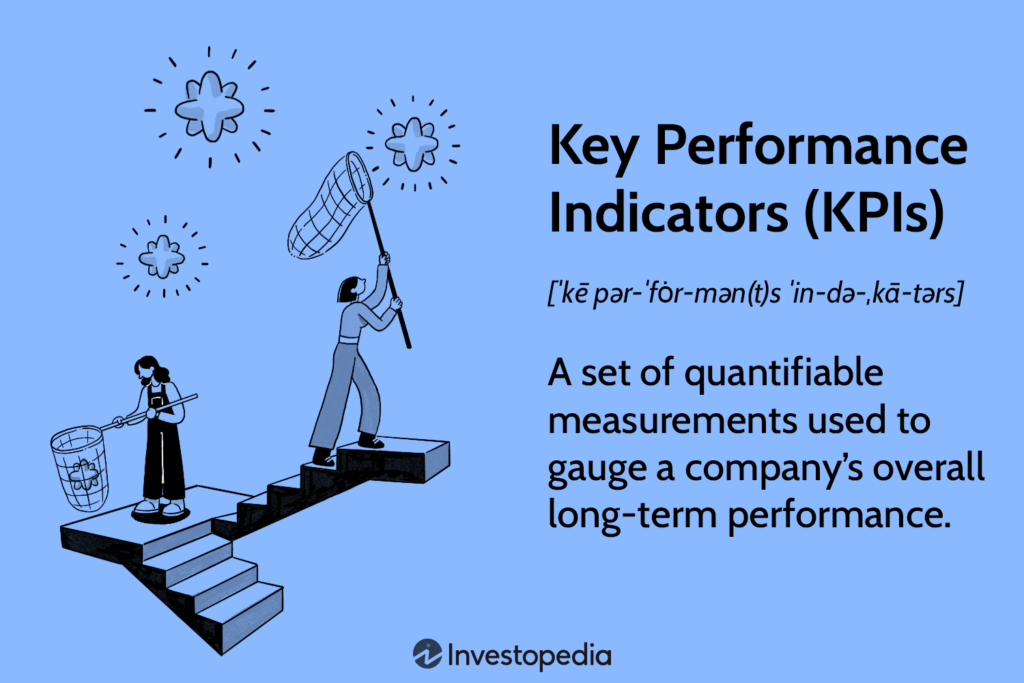In today’s data-driven world, organizations across industries rely on Key Performance Indicators (KPIs) to measure progress, track performance, and drive success. KPIs provide valuable insights into various aspects of business operations, allowing companies to make informed decisions and identify areas for improvement. In this article, we explore the significance of KPIs and highlight examples of commonly used metrics that help organizations evaluate their performance.

- Sales Revenue: Tracking Financial Success Sales revenue is a fundamental KPI that measures the total income generated from sales activities. It provides a clear indication of a company’s financial performance, growth, and market success. By monitoring sales revenue, businesses can assess the effectiveness of their sales strategies, identify lucrative markets, and make informed financial decisions.
- Customer Satisfaction Score (CSAT): Prioritizing Customer Experience CSAT is a KPI that measures the satisfaction level of customers based on their experiences with a product, service, or interaction. By collecting feedback through surveys or ratings, organizations can gauge customer sentiment and identify areas for improvement. Monitoring CSAT helps businesses nurture customer loyalty, enhance their products or services, and deliver exceptional customer experiences.
- Return on Investment (ROI): Evaluating Financial Efficiency ROI is a crucial KPI that measures the profitability and efficiency of an investment. By comparing the returns gained against the cost of investment, organizations can assess the success of projects, campaigns, or initiatives. Monitoring ROI helps allocate resources effectively, prioritize investments, and make data-driven decisions to maximize profitability.
- Website Conversion Rate: Optimizing Digital Performance The website conversion rate measures the percentage of visitors who take a desired action, such as making a purchase, filling out a form, or subscribing to a newsletter. By tracking this KPI, organizations can evaluate the effectiveness of their website design, user experience, and marketing campaigns. Improving the website conversion rate helps drive customer engagement, generate leads, and increase online revenue.
- Employee Turnover Rate: Fostering a Positive Work Environment Employee turnover rate measures the percentage of employees who leave an organization within a specified period. This KPI is vital for assessing employee satisfaction, engagement, and retention strategies. Monitoring turnover rates helps organizations identify underlying issues, improve workplace culture, and implement measures to enhance employee satisfaction and retention.
- Customer Acquisition Cost (CAC): Optimizing Marketing Efforts CAC calculates the average cost incurred to acquire a new customer. This KPI helps organizations evaluate the efficiency of their marketing and sales efforts. By monitoring CAC, businesses can allocate marketing budgets effectively, identify cost-effective acquisition channels, and optimize customer acquisition strategies.
- Project Schedule Variance (SV): Ensuring Project Success SV measures the variance between the planned schedule and the actual progress of a project. This KPI helps project managers monitor project performance, track milestones, and identify potential delays or issues. By analyzing SV, organizations can make adjustments, allocate resources efficiently, and ensure successful project completion.
- Net Promoter Score (NPS): Evaluating Customer Loyalty NPS measures customer loyalty and satisfaction by gauging the likelihood of customers recommending a product or service to others. By surveying customers and calculating the NPS, organizations can understand customer sentiment, identify brand advocates, and drive improvements in products, services, or customer support.
- Customer Churn Rate: Retaining Valuable Customers Customer churn rate calculates the percentage of customers who discontinue their subscription or cease using a product or service within a specific period. By monitoring this KPI, organizations can assess customer satisfaction, identify reasons for attrition, and implement strategies to improve customer retention.
- Employee Productivity: Maximizing Human Resources Employee productivity measures the output or contribution of employees within a given timeframe. This KPI helps organizations evaluate workforce efficiency, identify high-performing individuals or teams, and implement strategies to enhance productivity and overall organizational performance.
Key Performance Indicators (KPIs) play a vital role in monitoring, evaluating, and driving the success of organizations. By selecting relevant and measurable metrics, businesses can gain valuable insights into their performance, make data-driven decisions, and foster continuous improvement. Whether it’s tracking financial success, evaluating customer satisfaction, or optimizing operational efficiency, KPIs provide the foundation for growth and success in today’s competitive landscape. By harnessing the power of KPIs, organizations can unlock their full potential and achieve their strategic objectives.
As an Amazon Associate we earn from qualifying purchases through some links in our articles.




